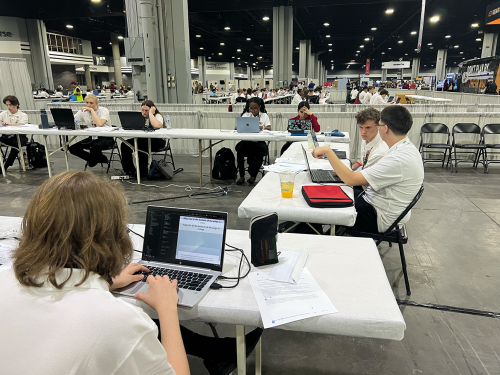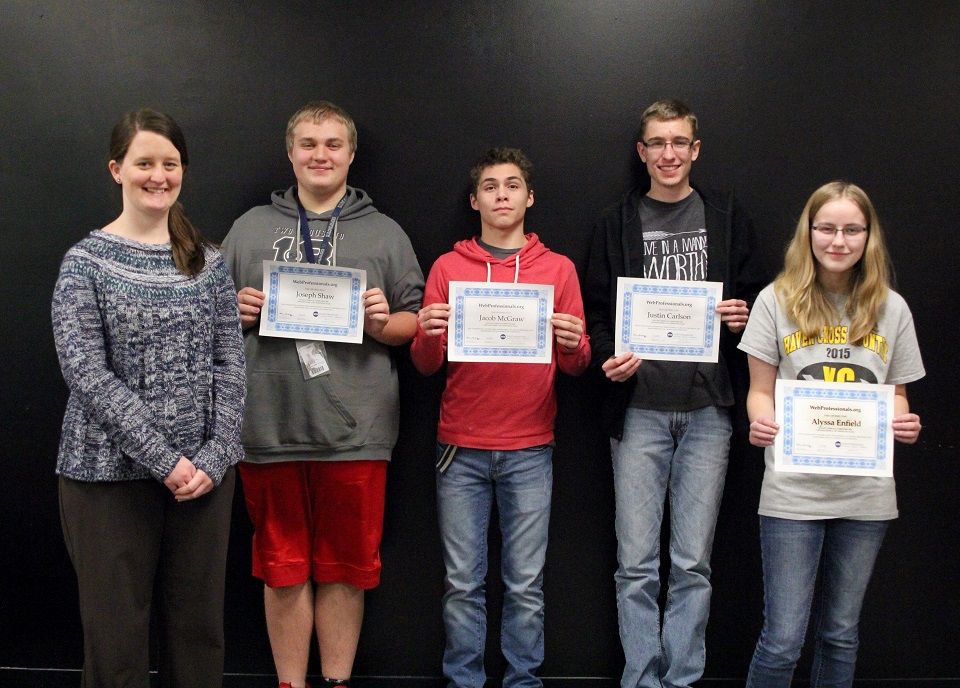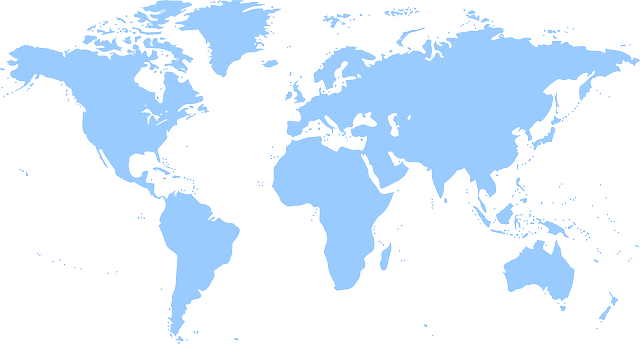Blog
2025 SkillsUSA National Web Design and Development Competition Recap

This summer, CTeLearning was proud to once again contribute to the 2025 SkillsUSA National Leadership & Skills Conference in Atlanta, GA at the Georgia World Congress Center from June 23-27. Our professional association partner Web Professionals Global ran the Web Design and Development competition for the 22nd year in a row, providing students from a number of states with the opportunity to participate.
Our founder and lead developer, Steve Waddell, has been helping to run SkillsUSA competitions since 2005. Additionally, this past spring, CTeLearning and Web Professionals Global helped to facilitate the SkillsUSA Web Design and Development state competitions, the winners of which were invited to the national competition. Let’s hear a recap from Mark Dubois, Executive Director of Web Professionals Global, who spent the week in Atlanta.
Week Recap
June 23 (Monday) - After arriving late Sunday night, Mark arrived at the registration desk very early in the morning. He met our colleague Tammy Finch (Web services, Inc). Once Mark checked in for the event and received the packets of information and badges, he and Tammy were off to Courtesy Corps to arrange for their assistance in setting up the competition area. Mark had previously requested their help and needed to confirm all details once on site. He also worked with SkillsUSA personnel to get the wifi router installed and configured. Shortly after noon, both he and Tammy participated in the Technical Chair meeting. This event is held just prior to the competition to communicate last minute information (such as the current dispatch phone number and emergency procedures in the event of severe weather or other disruptions). Mark also picked up a plaque honoring our long time co-chair, Steve Waddell, for his numerous years of service to this competition.
Once the meeting concluded, both Mark and Tammy returned to the competition area to verify the wifi was working. Although there was no easy way to stress test the environment, all appeared to be working once the router received a software update. Many thanks to SkillsUSA for their help in getting this set up and working.
June 24 (Tuesday) - We began the day once again testing the network and confirming all was working for the competition. At noon, we held a written test for competitors in room B-311. This was the room we also used for competition debriefing and training during the week. The test covered various aspects of web design and development including fundamentals every competitor should know as well as a few more advanced questions. When completed, competitors had a moment to grab some lunch prior to our mandatory training session (which started at 2 p.m.).
We covered the use of our online coding environment as part of our training and explained how the competition would be run along with providing a written overview. We also provided links to videos explaining the coding environment. Mark also reviewed some potential pitfalls which could happen when using the environment. He also reviewed why it is important to preview your work in the browser periodically.
Once questions were addressed, Tammy and
David Jackson (Tekki Systems) [long time member of our on site technical team] provided an overview of what it is like to work in the industry today. After a brief discussion, they answered many questions from competitors. We hold these sessions concurrently for both the secondary (high school) and post-secondary (college) competitors. Each state was represented with a team of two competitors who had to work together to complete a series of specific tasks. More information about that can be found below (Wednesday). The session ran a bit over as there were many keen questions from those who aspire to work in our industry.
Before we left the room, we reviewed the test scores of all competing teams and confirmed that their answers were properly recorded in our system. These scores are later input into a large spreadsheet for calculating the winners (gold, silver, and bronze) for both secondary and post-secondary competitions.
We mentioned to all competitors that we were throwing a wrinkle into the process this year. We have a practicing web professional who spent the same amount of time and used the same work order and assets to create a website. Since we are a global organization, we were able to ask someone from another time zone to do this. We decided that we would be reviewing their work as part of the competition debriefing. Everyone seemed intrigued by this new approach. They also got to meet this individual at the end of the training session (obviously via a Zoom meeting).
June 25 (Wednesday) - On this day we focused on the secondary teams. Roughly two dozen states were represented by teams of two. In order to compete in Atlanta, each team had to win first place in their respective state. We were honored to be able to work with many states in their respective state web design and development competitions. We provide the coding environment, assets, rubrics, and judging criteria. We ask each state to provide on-site personnel and judges.
Dan Dao (our SkillsUSA .NET [National Education Team] member was able to join us again this year. This is his second year and we greatly appreciated his help.
The competition began with a briefing and a client interview. In this case, David Jackson served in the role of client. He spent some time explaining what he needed as a client and was asked a number of questions by competitors about his business. Many of the questions were quite insightful and showed competitors wanted to understand his business to provide the best experience for his clients who would be visiting his website.
Once the client interview was finished, competitors returned to their workstations and spent about an hour drafting a low fidelity wireframe (some also did a site map and a few did a mood board/ stylesheet). We supplied the paper for use in this part of the process. Once they were finished with their version of the wireframe, they flagged down a team member who had them secure their work and the team was then handed a medium fidelity wireframe developed by a practicing professional. This is what each team used as they developed the website. We have used this approach for a number of years and it vastly helps with judging as all judges are examining and comparing similar work (for example, they expect mobile versions to display images in a certain spot that is different from the desktop version). Competitors worked as a team and had until 3 p.m. to complete their work and validate it was working properly in our online coding environment. While each team was working, they were called up for a team interview. In addition to addressing why their team should be considered for future work with clients, we also asked detailed questions about their individual wireframes. Those wireframes were left with the interviewers. At 3 p.m. the competition concluded and competitors were able to leave the venue.
Judges then began reviewing competitor work (each team had one submitted spot). We use our custom online tool as it has a judge view. In that view, judges can move from one team to another effortlessly. Judges are able to view the source code, validate it, and test in various mobile device settings. However, judges are not able to make any changes to the code itself (they are operating in a read only mode). We have been doing this for over 20 years (and a few of our judges have been with us for almost the entire time).
June 26 (Thursday) - The post-secondary teams competed on this day. We had roughly a dozen post-secondary teams. We have noted that there are often fewer post-secondary teams than secondary teams. This is part of the reason we have the high school teams compete on Wednesday as judges can spend Wednesday evening as well as most of the day Thursday evaluating the work of the secondary competitors.
As with the Wednesday competition, all teams met with the client and had the chance to ask many questions about his business. They then began to develop their own low fidelity wireframes. After an hour, they notified team members who secured their wireframes and provided competitors with a medium fidelity wireframe they could use to develop the website.
As before, the competition ended at 3 p.m. We then held a debriefing session in B-311. We reviewed the work of our volunteer web professional and showed his work in the judge's view (so competitors got a behind the scenes look similar to what judges use - although it was in a different but similar coding environment). We then opened the floor for questions and comments by the competitors. Mark took notes as these comments will be reviewed and incorporated into next year’s event. Those notes have been shared with all team members and we are starting to make modifications already.
Once the debriefing session concluded, a number of competitors accompanied us back to the competition venue as we had to dismantle the tables and chairs and stack all for the move out happening on Friday. Thanks to those who helped. You made a big difference.
We then returned to our respective hotel rooms. Mark reviewed the score sheets provided by judges for the secondary competition and entered those scores into the SkillsUSA judges data store while the work of the post-secondary teams was being evaluated. Judges got all completed and the final scores were all recorded before the 9 p.m. deadline set by SkillsUSA. They need the time to then develop the materials for the awards ceremony on Friday.
June 27 (Friday) - This was the first year that we knew when we would be handing out the awards (to the minute). We arrived at State Farm Arena and navigated our way backstage. Tammy and David placed the medals on the winning teams (gold, silver, and bronze) for both secondary and post-secondary teams. We went with the teams for official back state photos after the event. Congratulations to all who participated. Although there can only be one first place team in each event, you are all winners because you stepped up and tested your knowledge, skills, and abilities on a national stage. In a number of states, competitor teams had to win a regional competition, proceed to the state competition, and then on to the national competition (winning first in each to qualify for our competition in Atlanta). Well done and congratulations to all!
Get in Touch
CTeLearning is proud of its work over the years with SkillsUSA. Reach out to us today for information on our collaboration with SkillsUSA and course offerings.
Share To
Get in touch with us today!
You can book a demo directly using Calendly, call us directly at 913-764-4272 or 877-828-1216, or submit the form and we will reach out to you.
We look forward to helping you and your students.

Most Recent Posts




